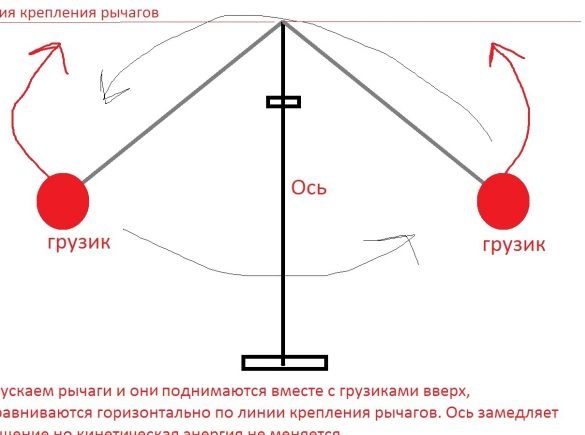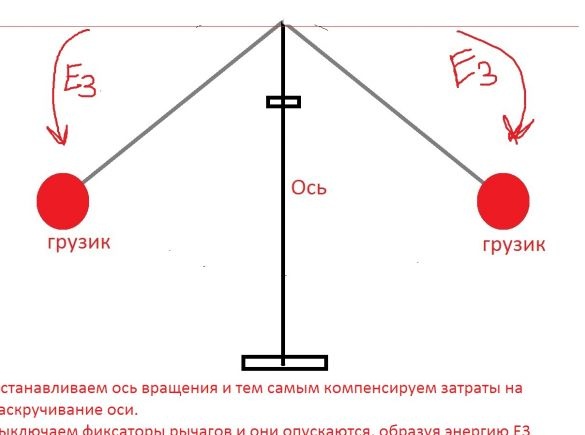I ask you to find a mistake, if any, so that I do not have to create this engine.
Go!
1. As a basis, we have centrifugal force, as well as another interesting phenomenon - the relationship of speed and mass.
Imagine that you are standing on a rotating stand and spinning at a certain speed. You have steel balls in your hands and you hold them near your chest. As soon as you spread your arms in different directions, you will begin to spin more slowly, since the "mass" has grown, figuratively speaking.
If you again reduce the balls to the chest, then your rotation speed will be the same.
So, regardless of how you throw balls and how fast you rotate, the kinetic energy does not change.
2. Now imagine a vertical axis on which two levers of the same length are fixed at an angle. The levers are lowered at a certain angle, and weights are installed at their ends. Once you untwist this design, the levers will rise to the level of their attachment points due to centrifugal force.
And then the fun begins. Will the kinetic energy of this whole body change if the levers with weights themselves rise up? I think not.
In this regard, we have a hole in the law of conservation of energy, namely, energy is taken from nowhere. We spin the axis with levers to a certain speed and spend a certain amount of kinetic energy, for example, E1. Then we turn off the lever locks, they are aligned along the attachment line and the design slows down, but the kinetic energy does not change, we can remove it in the same equivalent, let's call this energy E2.
As a result, E1 = E2, that is, the energy invested and the shot are the same (not counting the friction force and other crap). And we also get free energy, in the form of weights raised up, release the weights clamps, they lower and energy E3 is formed, which exceeds the efficiency for 100%.
Where am I wrong?



